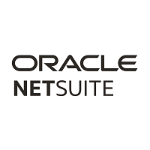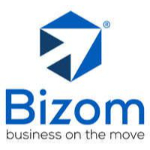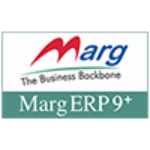List of Best Distribution Management System
Showing 10 of 97 productsOracle NetSuite is a cloud-based business management software designed to help companies of all sizes streamline their operations and boost their growth. With its user-friendly interface features, NetSuite is a game changer in the world of business s...Read Oracle NetSuite Reviews
Bizom is a solution designed to streamline and revolutionize your business operations. With its advanced features and user-friendly interface, Bizom empowers you to take control of inventory management, sales, and distribution, providing you with the...Read Bizom Reviews
Go4Plus-is a ultimate software for streamlining your business operations. With its user-friendly interface features, Go4Plus is designed to enhance efficiency and productivity. Say goodbye to complex processes and hello to a seamless experience with...Read Go4Plus Reviews
for Field Staff Monitoring and GPS Tracking and experience faster inventory turnover, automated billing, and GST-ready invoicing solutions. MARG ERP 9+ Distribution Software is a trusted system used by over 10 lakh users and supported by 850+ center...Read MARG ERP 9 Distribution Reviews
LOGIC ERP is a highly popular and widely recognized complete ERP software solution that caters to various industries such as Retail and POS, Warehouse Management, Marketplace, and eCommerce. It offers comprehensive business insights and built-in Bus...Read LOGIC ERP Reviews
Busy Accounting Software is a solution for all your financial management needs. With its user-friendly interface features, Busy streamlines your accounting processes and helps you stay on top of your finances. Say goodbye to tedious tasks and hello t...Read Busy Accounting Software Reviews
HDPOS Smart is a solution for all your point-of-sale, billing, and inventory management needs. With its user-friendly interface features, HDPOS Smart simplifies your business processes and helps you grow your business. Say goodbye to traditional meth...Read HDPOS Smart Reviews
SalesDiary is a efficient and innovative solution for all your sales tracking needs. With SalesDiary, you can effortlessly organize and manage your sales data, track your progress, and make informed decisions to boost your business. Say goodbye to ma...Read SalesDiary Reviews
FieldAssist is a tool that streamlines field operations and maximizes efficiency for businesses of all sizes. With its user-friendly interface features, FieldAssist empowers teams to plan, execute, and track tasks seamlessly, resulting in increased p...Read FieldAssist Reviews
Fieldproxy is a software designed to optimize and simplify field operations for businesses. With its user-friendly interface features, Fieldproxy revolutionizes the way businesses manage their field tasks, resulting in increased efficiency and produc...Read Fieldproxy Reviews
- What Is a Distribution Management System?
- Top Reasons Why Businesses Need Distribution Management System?
- What Are the Top Key Features of Distribution Management System?
- What Are the Top Benefits of a Distribution Management System?
- What Are the Steps to Choose the Right Distribution Management System?
- What Are the Types of Distribution Management Systems for Different Industries?
- What Are the Technology Trends for Best Distribution Management System?
- What Are the Deployment Options for a Distribution Management System?
What Is a Distribution Management System?
A Distribution Management System (DMS) is a real-time system that manages the distribution and monitoring of electric power on a power grid. It is a computer-based technology that allows utilities to monitor and manage power distribution. It contributes to the reliability and safety of electric power delivery by enabling the efficient operation and control of substations, transmission lines, and distribution networks.
The best distributor management system goal is to effectively balance power delivery, maintain a stable power supply, and regulate peak loading. It entails automated monitoring and regulation of power grid loads to detect potential electrical system faults. In addition, the system constantly reconnects the power supply in the event of a failure, monitors and optimizes electricity use across the system, and provides customer billing and reporting.
It is vital to emphasize that the technology enables utilities to respond more rapidly and intelligently to changes in the grid, allowing them to be both cost-effective and environmentally beneficial. DMS also aids in better managing peak demand, reducing outages, and reducing energy loss. Overall, distribution management system software aids in the delivery of high-quality power at maximum efficiency while satisfying the needs of customers.
Top Reasons Why Businesses Need Distribution Management System?
1. It provides a clear picture of inventory availability and demand, assisting in the avoidance of stockouts and overstocking.
2. Accurate order fulfillment and commodities exchange via RFID technology.
3. The ability to track orders and monitor shipments in real-time, allowing for on-time delivery.
4. Reduces customer response time by automating order-related processes.
5. Enhanced delivery truck routing and scheduling with Google Maps connection.
6. Printing shipping labels, receiving things, making bills, and other repetitive processes are all automated.
7. Aids in transportation cost optimization by monitoring supplier performance and controlling pick-up and delivery routes.
8. With the help of innovative integration solutions, it is possible to eliminate paperwork and manual data entry errors.
9. Assists in the automation of inventory allocation and replenishment across several retail locations.
10. Allows firms to anticipate product demand by undertaking advanced demand forecasting.
11. Provides detailed access to inventory levels across different warehouses in a single view, allowing for educated decisions.
12. Lowers operational costs by avoiding needless transit with cross-docking functionality.
13. Simplifies multi-tier distribution systems to ensure an effective supply chain and timely deliveries.
14. Provides warehouse management protocol implementation for effective operations and order management.
15. Allows for delivery tracking via different channels from the customer's end, simplifying the logistics process.
What Are the Top Key Features of Distribution Management System?
1. Automation of Workflow Processes: A Distribution Management System (DMS) automates various administrative operations, hence lowering employee workload. This eliminates manual data entry, lowers job duplication, and improves accountability.
2. Real-time Visibility & Reporting: The best distribution Management System (DMS) automates many administrative operations, lowering employee workload. This eliminates manual data entry, saves duplication of work, and improves accountability.
3. Improved Customer Experience: By facilitating speedier orders and delivery, top Distribution Management Systems can assist you provide an excellent client experience. This promotes consumer satisfaction, which leads to increased loyalty and sales.
4. Accurate Tracking & Monitoring: DMS aids in the tracking and monitoring of shipments, deliveries, and assets. It allows the user to monitor the product lifecycle and assure stock availability in all stores.
5. Integration with ERP and other Applications: Advanced distribution management systems can be connected with other enterprise software systems such as ERP, accounting, supply chain, and WMS to increase efficiency.
6. Warehouse Management: The DMS distribution management system makes warehouses more productive by enhancing inbound and outgoing procedures and lowering labor expenses associated with storage and material handling.
7. Fleet Management: Fleet management can use DMS to optimize fuel expenditures, driver performance, and maintenance costs.
8. Security & Compliance: Top distribution management software complies with the necessary safety and security standards and guarantees that all operations are carried out under industry standards.
What Are the Top Benefits of a Distribution Management System?
1. Increased Efficiency: A Distribution Management System boosts supply chain efficiency by delivering real-time data that enables better decisions. Manufacturers can monitor and control the entire distribution process from a single system, removing the need for human data entry.
2. Improved Visibility: The ability to track the supply chain throughout the entire process provides the company with increased visibility. This makes it easy to identify issues before they result in costly delays or inventory shortages.
3. Reduced Costs: Automation and increased distribution process control minimize the expenses associated with manual procedures, such as errors and wasted time.
4. Better Risk Management: A distribution management system software with real-time data and tracking capabilities enables producers to immediately detect and mitigate potential risks.
5. Enhanced Optimization: The data acquired by top distribution management software gives the business insight into the whole distribution chain, allowing it to optimize the system and increase performance.
6. Better Resource Management: The best Distribution management software allows manufacturers to more effectively book, manage, and optimize resources, allowing them to make the required modifications to maintain service levels and satisfy customer demands.
7. Improved Communication: An advanced distribution management system connects information in real time between different segments of the supply chain and helps increase communication between various stakeholders.
8. Enhanced Compliance: An advanced distribution system boosts the possibility of regulatory compliance by collecting important data across the supply chain network. It also raises awareness to assist firms in identifying and responding to any compliance issues.
What Are the Steps to Choose the Right Distribution Management System?
1. Identify Your System Requirements: Identifying your present demands and system requirements is the first step in selecting the correct distribution management system. Consider the types of products you'll be managing to establish the necessity for features like inventory management, price, and taxes calculations, order fulfillment, and tracking.
2. Compare Real-time Options: Collect the features and specs of various top distribution management systems and evaluate their capabilities to ensure you select the most compatible option. To guarantee seamless integration, assess the system's compatibility with existing tools and platforms.
3. Analyze Cost Structure: Before committing to a system, it is critical to evaluate the total cost of ownership (TCO). Consider both recurring and one-time costs connected with the software acquisition and implementation.
4. Read Reviews and Case Studies: Read verified customer evaluations and case studies from shortlisted vendors to see how their DMS distribution management system can assist growth and increase efficiency.
5. Request a Demo: Request a demo of advanced distribution system capabilities from providers who satisfy your needs. This stage will give you more information about how their system works in real time and how it addresses your specific requirements.
6. Review Existing Support Options: Choose the best distribution management system that responds quickly to software-related queries. Inquire about their customer service channels, which may include email, phone, live chat, and an online community.
7. Finalize Selections: Gather information about each vendor's services, compute purchasing prices, and make an educated decision. Before signing, thoroughly review the deal.
What Are the Types of Distribution Management Systems for Different Industries?
Distribution management systems (DMS) vary depending on the industry they are used in and can be generally divided into three categories: retail, wholesale, and manufacturer.
Retail distribution management systems: Retailers use them to manage inventory, save information, and track sellable items. These systems frequently enable shops to generate forecasting and ordering information, as well as manage returns.
Wholesale distribution management systems: Distribution management system software utilizes them to manage inventory, track shipments, and generate sales data. These technologies can assist wholesalers in optimizing their sales and inventory levels, forecasting revenue and market trends, and monitoring customer service levels.
Manufacturer distribution management systems: Manufacturers utilize barcodes to track raw materials, components, and completed goods. These technologies assist manufacturers in managing product availability, supply chain activities, and optimizing product inventory levels. They also aid producers in the scheduling of manufacturing orders and the investigation of potential problems or possibilities.
What Are the Technology Trends for Best Distribution Management System?
The technology trends for the best Distribution Management System include:
1. Automation and Robotics: Automation and robotics technology are transforming distribution management by increasing the efficiency and accuracy of distribution operations. Automation and robotics enable the automation of routine jobs, the reduction of inventory costs, the streamlining of order-picking processes, and the optimization of warehouse operations.
2. Artificial Intelligence (AI): In top distribution management software, AI-powered bots and sensors are becoming increasingly prevalent. Distribution center vendors may use AI to obtain important insights into client preferences, detect and prevent shipment mistakes, track items in real time, and give predictive analytics to estimate demand.
3. Cloud Computing: Cloud computing is changing the way distribution centers manage their data and operations. Cloud computing enables faster data transfer, remote database access, better analytics, and increased scalability.
4. IoT Devices: IoT (Internet of Things) devices are being used in distribution facilities to enable real-time asset tracking and temperature monitoring. The Internet of Things assists businesses in determining whether a product has been received or dispatched, tracking shipment information, and monitoring environmental factors.
5. Blockchain: Blockchain and other distributed ledger technologies are gaining traction in the distribution management business. To ensure safe and secure delivery, blockchain technology can enable the tracing of items along the distribution chain.
6. Augmented Reality (AR): AR technology enables distribution centers to test and enhance their processes by overlaying information such as step-by-step instructions for picking, packing, and shipping items on a visual overlay.
What Are the Deployment Options for a Distribution Management System?
Deployment options for the best distribution Management System vary depending on the company’s size, products, location, and other factors. The most common types of deployments include:
1) On-Premise: This is the most common method of implementing a distribution management system software. It entails installing the system on the physical servers and networks of the firm. This strategy provides the most data control and enables specific interfaces with current systems.
2) Cloud-Based: Cloud-based solutions are accessed via a web browser and offer tremendous scalability, cheap cost, and access at any time. This method is becoming more popular due to its adaptability and low cost.
3) Hybrid: A hybrid deployment combines on-premise and cloud-based models, allowing for a customized configuration that meets the needs of the firm.
4) Managed Service: A managed service offers a completely hosted system that can be swiftly deployed, as well as extra services such as software maintenance and support. This method requires little IT knowledge and gives significant cost savings.










